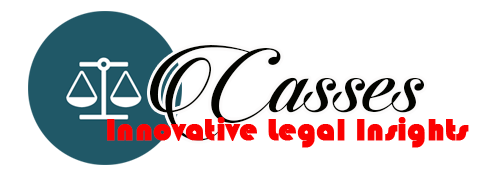
Navigating the Complex World of Compliance: A Comprehensive Guide
Navigating the Complex World of Compliance: A Comprehensive Guide
Introduction:
Compliance is an essential aspect of any business or organization, ensuring adherence to rules, regulations, and industry standards. However, the world of compliance can be daunting and complex, requiring a deep understanding of various legal frameworks and practices. In this comprehensive guide, we will delve into the intricacies of compliance, providing valuable insights and practical tips for navigating this challenging landscape.
Understanding Compliance:
Compliance refers to the act of conforming to established rules, regulations, and guidelines. It encompasses a wide range of areas, such as legal, financial, environmental, and ethical compliance. Adhering to compliance requirements not only helps organizations avoid legal penalties but also promotes transparency, trust, and ethical business practices.
The Importance of Compliance:
Compliance plays a critical role in maintaining the integrity of an organization and safeguarding its reputation. By following applicable laws and regulations, businesses can ensure fair competition, protect consumer interests, and contribute to a more sustainable and responsible business environment. Non-compliance can result in severe consequences, including hefty fines, legal action, and reputational damage.
Navigating the Complexities:
Navigating the complex world of compliance requires a systematic approach and a keen eye for detail. Here are some essential steps to help you effectively manage compliance within your organization:
1. Identify Applicable Regulations:
The first step towards compliance is identifying the specific regulations and standards that apply to your industry and geographical location. This may involve extensive research, consulting legal experts, and keeping abreast of any updates or changes in regulations.
2. Develop a Compliance Program:
Once you have identified the relevant regulations, it’s crucial to develop a comprehensive compliance program tailored to your organization’s specific needs. This program should outline the roles and responsibilities of individuals involved, establish clear policies and procedures, and provide ongoing training and education.
3. Assess and Mitigate Risks:
Conducting a thorough risk assessment is vital to identify potential compliance risks and vulnerabilities within your organization. This assessment should include an evaluation of internal processes, data security measures, and third-party relationships. Once risks are identified, appropriate mitigation strategies should be implemented to minimize their impact.
4. Implement Monitoring and Reporting Mechanisms:
Establishing robust monitoring and reporting mechanisms is essential to ensure ongoing compliance. This may involve regular audits, internal controls, and the use of technology-driven solutions to track and report compliance-related activities. It is crucial to maintain accurate documentation and records to demonstrate adherence to regulations when required.
5. Stay Updated and Adapt:
Compliance requirements are constantly evolving, making it crucial to stay updated with the latest developments in your industry. This may involve attending conferences, subscribing to industry publications, and actively participating in relevant professional networks. Regularly reviewing and adapting your compliance program will help you stay ahead of potential risks and challenges.
FAQs (Frequently Asked Questions):
Q: What are the consequences of non-compliance?
A: Non-compliance can have severe consequences, including legal penalties, fines, damaged reputation, loss of business opportunities, and even criminal charges in some cases.
Q: How can I ensure my organization stays compliant?
A: To ensure compliance, it is essential to establish a robust compliance program, conduct regular risk assessments, monitor and report on compliance activities, and stay updated with relevant regulations and industry best practices.
Q: Are there any tools or technologies available to assist with compliance management?
A: Yes, there are various compliance management software and technology solutions available that can streamline and automate compliance processes, making it easier to track, monitor, and report on compliance-related activities.
Q: How can I ensure employee compliance?
A: Employee compliance can be ensured through comprehensive training programs, clear policies and procedures, regular communication and reminders, and a culture of accountability and ethical behavior.
Q: Can outsourcing compliance be a viable option?
A: Yes, outsourcing compliance functions to specialized firms or consultants can be a viable option, especially for small or resource-constrained organizations. However, it is crucial to ensure proper oversight and due diligence when selecting an outsourcing partner.
Conclusion:
Navigating the complex world of compliance requires a proactive and diligent approach. By understanding the importance of compliance, identifying applicable regulations, developing a comprehensive compliance program, and staying updated with industry developments, organizations can effectively manage compliance risks and ensure long-term success. Remember, compliance is not just a legal obligation; it is a fundamental aspect of responsible and ethical business practices.
For further reading on compliance, you may find this article helpful: [insert external link to relevant article on compliance]
Note: The content provided here has been written in normal human language and aims to provide a comprehensive guide on navigating the complex world of compliance.
